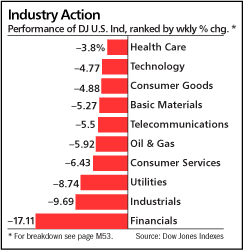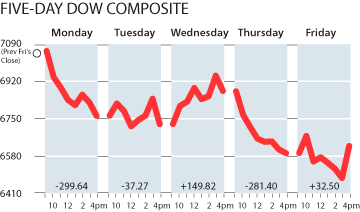There are as many starting points for the mortgage meltdown as there are fears about how far it has yet to go, but one decisive point of departure is the final years of the Clinton administration, when a kid from Queens without any real banking or real-estate experience was the only man in Washington with the power to regulate the giants of home finance, the Federal National Mortgage Association (FNMA) and the Federal Home Loan Mortgage Corporation (FHLMC), better known as Fannie Mae and Freddie Mac.
Andrew Cuomo, the youngest Housing and Urban Development secretary in history, made a series of decisions between 1997 and 2001 that gave birth to the country's current crisis. He took actions that—in combination with many other factors—helped plunge Fannie and Freddie into the subprime markets without putting in place the means to monitor their increasingly risky investments. He turned the Federal Housing Administration mortgage program into a sweetheart lender with sky-high loan ceilings and no money down, and he legalized what a federal judge has branded "kickbacks" to brokers that have fueled the sale of overpriced and unsupportable loans. Three to four million families are now facing foreclosure, and Cuomo is one of the reasons why.
What he did is important—not just because of what it tells us about how we got in this hole, but because of what it says about New York's attorney general, who has been trying for months to don a white hat in the subprime scandal, pursuing cases against banks, appraisers, brokers, rating agencies, and multitrillion-dollar, quasi-public Fannie and Freddie.
It all starts, as the headlines of recent weeks do, with these two giant banks. But in the hubbub about their bailout, few have noticed that the only federal agency with the power to regulate what Cuomo has called "the gods of Washington" was HUD. Congress granted that power in 1992, so there were only four pre-crisis secretaries at the notoriously political agency that had the ability to rein in Fannie and Freddie: ex–Texas mayor Henry Cisneros and Bush confidante Alfonso Jackson, who were driven from office by criminal investigations; Mel Martinez, who left to chase a U.S. Senate seat in Florida; and Cuomo, who used the agency as a launching pad for his disastrous 2002 gubernatorial candidacy.
With that many pols at the helm, it's no wonder that most analysts have portrayed Fannie and Freddie as if they were unregulated renegades, and rarely mentioned HUD in the ongoing finger-pointing exercise that has ranged, appropriately enough, from Wall Street to Alan Greenspan. But the near-collapse of these dual pillars in recent weeks is rooted in the HUD junkyard, where every Cuomo decision discussed here was later ratified by his Bush successors.
In 2000, Cuomo required a quantum leap in the number of affordable, low-to-moderate-income loans that the two mortgage banks—known collectively as Government Sponsored Enterprises—would have to buy. The GSEs don't actually sell mortgages to borrowers. They buy them from banks and mortgage companies, allowing lenders to replenish their capital and make more loans. They also purchase mortgage-backed securities, which are pools of mortgages regularly acquired by the GSEs from investment firms. The government chartered these banks to pump money into the mortgage market and, while they did it, to make a strong enough profit to attract shareholders. That created a tug-of-war between their efforts to maximize shareholder value, which drove them toward high-end mortgages, and their congressionally mandated obligation to finance loans for those who needed help. The 1992 law required HUD's secretary to make sure housing goals were being met and, every four years, set new goals for Fannie and Freddie.
But raising the affordable-housing goals was only half the Cuomo story.
The HUD secretary is also required to produce voluminous rules that govern how the GSEs meet those goals, and the 187-page rules Cuomo issued opened the door to abuse.
The rules explicitly rejected the idea of imposing any new reporting requirements on the GSEs. In other words, HUD wanted Fannie and Freddie to buy risky loans, but the department didn't want to hear just how risky they were.
HUD conceded in the rules that many consumer groups had urged it to insist that the GSEs provide "loan-level data" revealing how many of their loans contained high interest rates, prepayment penalties, or other requirements that presaged bad loans.
Indeed, in March 2000, HUD had acknowledged that the new goal-driven pressure on the GSEs might "warrant increased monitoring and additional reporting." But when the final rules were adopted in October, that momentary caution had been abandoned: "HUD is not establishing any requirements for additional data to carry out this rule." The report explained that the GSEs "objected" to information mandates "related to their purchases of high-cost mortgages," so HUD decided against imposing "an undue additional burden." HUD would have no way of telling how abusive the low-income mortgages it was mandating might be.
Follow this link for the complete story.
http://www.villagevoice.com/2008-08-05/news/how-andrew-cuomo-gave-birth-to-the-crisis-at-fannie-mae-and-freddie-mac/
Subscribe to:
Post Comments (Atom)


No comments:
Post a Comment